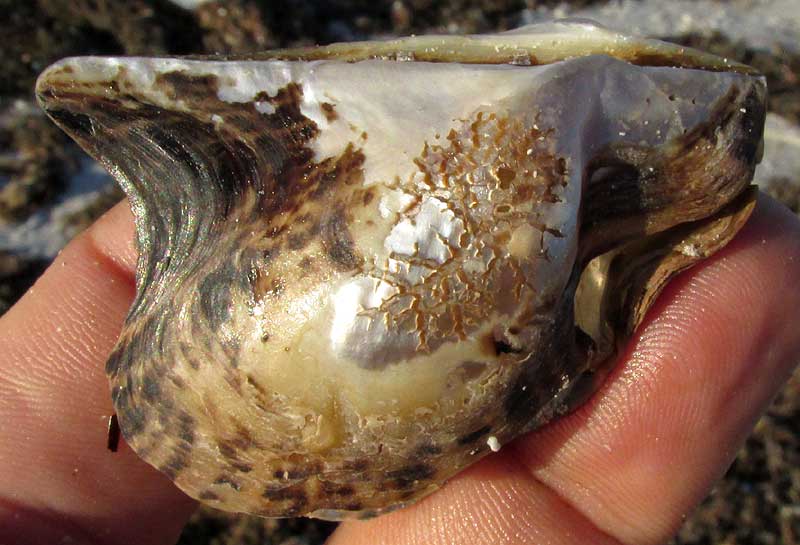Excerpts from Jim Conrad's
Naturalist Newsletter

from the December 21, 2014 Newsletter issued from Río Lagartos, on the Yucatan Peninsula's northern coast (~N21.60°, ~W88.16°), Yucatán state, MÉXICO
ATLANTIC WINGED OYSTER
A bivalve shell washed onto shore on the Gulf of Mexico beach across the estuary from Río Lagartos. That's it above.
Its background color with blotches of pearly luster are reminiscent of oyster shells, but oyster shells don't have that fingerlike projection shown at the picture's top, left corner. What we have here is one of several species known as winged oysters. It's the Atlantic Winged Oyster, PTERIA COLYMBUS. In older individuals, the left-pointing wing becomes longer.
Atlantic Winged Oysters occur in the Western Atlantic in waters between ten and a hundred feet deep (3-30m) from North Carolina on the US Atlantic coast south through the Gulf of Mexico and Caribbean to Venezuela and northern Brazil. Often they're found attached to stems of gorgonian corals by strong filaments that some kinds of mollusks are able to secrete, called "byssus threads." Atlantic Winged Oysters often host algae and other organisms on their shells, which camouflage it. They filter algae and other organisms from water circulating around them.
Sometimes certain winged oyster species are called winged pearl oysters because they can produce pearls and are cultivated for that purpose. Studies indicate that with proper culture our Atlantic Winged Oyster might produce pearls of a size and quality equal to pearls produced commercially in Japan and Australia, where commercial pearl culture is most developed.